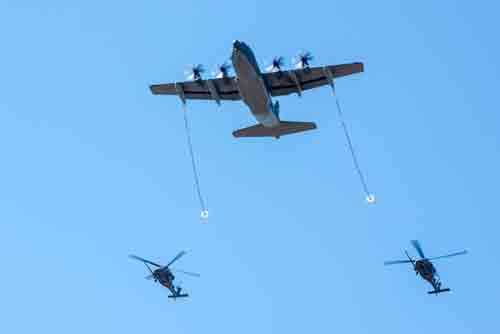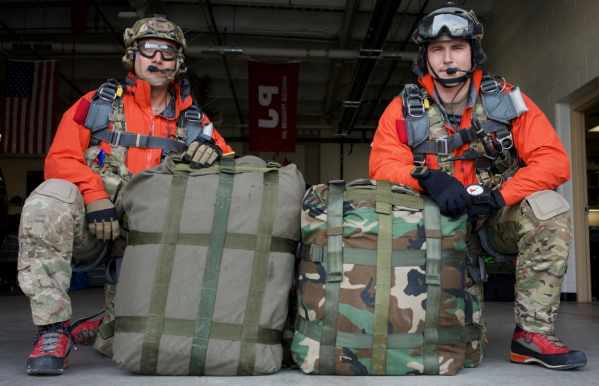
JOINT BASE ELMENDORF-RICHARDSON, Alaska — Current and former members of the Alaska Air National Guard’s 211th Rescue Squadron bid farewell to the last of their HC-130N aircraft Jan. 17 as it departed here for Patrick Air Force Base, Florida.
The HC-130 variants of the C-130 family of aircraft are designed for long-range search-and-rescue missions. They are set up to provide command and control, airdrop of pararescue personnel and equipment, and perform air-refueling missions for helicopters like the HH-60 Pave Hawk helicopters flown by the 211th’s sister unit, the 210th Rescue Squadron.
The older HC-130Ns are scheduled to be replaced with four new HC-130J “Combat King II” aircraft which are currently being manufactured at a Lockheed Martin plant in Georgia.
“The new models will have significant improvements,” explained Col. Scott Coniglio, vice commander of the 211th’s parent unit, the 176th Wing, and a former HC-130N navigator.
According to a USAF factsheet, modifications to the HC-130J include improved navigation, threat detection and countermeasures systems. The aircraft have a fully-integrated inertial navigation and global positioning systems, and night-vision goggle compatible interior and exterior lighting. They also have forward-looking infrared sensors, radar and missile warning receivers, chaff and flare dispensers, satellite and data-burst communications, and the ability to receive fuel in flight via a Universal Aerial Refueling Receptacle Slipway Installation.[xyz-ihs snippet=”Adsense-responsive”]With the new equipment comes a large amount of training, Coniglio said.
“Currently, the majority of the 211th Rescue Squadron are down in Kirtland Air Force Base [New Mexico] for training on the new model,” he said.
After the new models arrive, they will require 90 days of maintenance to get the 176th Maintenance Squadron up to speed with the new airframes, explained Master Sgt. Ryan Conti, a flight engineer with the 211th RQS.
“The first one is scheduled to arrive in late May or early June, depending on the production timelines,” he said. “The other three planes are scheduled to arrive over the next few months afterwards.”
The 176th Wing received their first rescue HC-130s in 1990, according to Col. Michael Griesbaum, commander of the 176th Maintenance Group and an HC-130 pilot. The Wing had a total authorization of four HC-130N aircraft, with sequential tail numbers 88-2101, 88-2102, 90-2103, 92-2104, 92-2105 and 93-2106 (the first two aircraft were transferred to another rescue unit when the final two were received).
The sequential numbers denote that each of the six aircraft were part of the 210th Air Rescue Squadron. In 2004, Air Force Special Operations Command restructured the unit, splitting the helicopter, fixed wing and pararescue flights into separate squadrons.
The HH-60 helicopter flight became the 210th Rescue Squadron, the HC-130 flight became the 211th Rescue Squadron, and the pararescue flight became the 212th Rescue Squadron.
Speaking about tail number 2016 before its departure for Kirtland AFB, retired Master Sgt. Adam Galindo expressed his fondness for the airframe.
“We had the pleasure of receiving this aircraft fresh from the factory,” said Galindo, who was a flight engineer for the 211th RQS until his retirement in 2007. “It had about 17 hours on it when we received it. It was a good aircraft, and we took a lot of pride in what we did.”
Currently, Galdino’s son is training on the new HC-130J model, and will continue his father’s legacy with the fixed wing search and rescue aircraft, he said.
“It was a remarkable plane,” said retired Lt. Col. Harry Debruhl, who flew the HC-130N’s under the flag of the 210th Air Rescue Squadron until he retired in 1996. “All the missions we went out on, all the lives we saved, and the great people in the unit, that’s what meant the most to me. It’s the best plane ever made, and I hate to see it go. I definitely look forward to seeing what the new plane looks like when they get here.”
[xyz-ihs snippet=”Adsense-responsive”]








